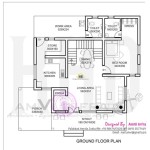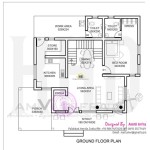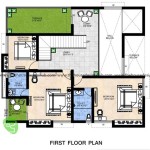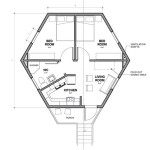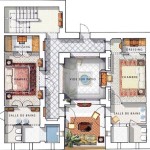Navigating the Maze of Old House Floor Plan Renovations
Embarking on an old house renovation project can be both exciting and daunting, especially when it comes to reconfiguring the floor plan. These historic structures often have charming quirks and unique layouts that require careful consideration. To ensure a successful renovation, it's crucial to understand the essential aspects of old house floor plans.
1. Respecting the Original Integrity
When renovating an old house, it's essential to respect its historical integrity. This means preserving original architectural features such as moldings, fireplaces, and staircases. These elements contribute to the character and charm of the home, and removing them can diminish its value and authenticity.
2. Understanding the Structural Framework
Old houses often have unique structural frameworks that differ from modern construction methods. It's important to understand the location of load-bearing walls and other structural elements before making any changes to the floor plan. Modifying these structures can compromise the stability of the house and require costly repairs.
3. Maximizing Natural Light
Natural light plays a crucial role in creating a bright and airy atmosphere in any home. When renovating an old house, it's essential to identify opportunities to maximize natural light. This can involve adding windows, skylights, or removing unnecessary walls that block light.
4. Enhancing Flow and Functionality
The flow and functionality of a floor plan are essential for everyday living. Consider the way people move through the house and identify areas that could be improved for better accessibility and convenience. This may involve widening doorways, creating open-plan living spaces, or adding storage options.
5. Addressing Accessibility Needs
If you plan to age in place or accommodate individuals with accessibility needs, consider incorporating features such as ramps, wider hallways, and accessible bathrooms. These modifications can ensure that the home remains comfortable and safe for everyone.
6. Balancing Aesthetics and Practicality
While it's important to preserve the original integrity of an old house, it's also crucial to consider modern design trends and practicality. Find a balance between maintaining the home's character and incorporating updates that enhance its functionality and livability.
7. Hiring Qualified Professionals
Renovating an old house is a complex undertaking that often requires the expertise of qualified professionals. Consider consulting with an architect, engineer, and interior designer to ensure that your plans are structurally sound, aesthetically pleasing, and meet your specific needs.
Conclusion
Navigating the maze of old house floor plan renovations requires careful planning, respect for the original structure, and attention to functionality and aesthetics. By considering the essential aspects outlined above, you can create a renovated space that retains the charm of the past while embracing the comforts of the present.

Sample Open Floor Plan Renovation Pegasus Design To Build

Our Farmhouse Renovation Modernizing The Floor Plan

Exquisite Home Remodeling Plans Renovation Floor For Old Houses Free Transpa Png Pngkey

Sample Open Floor Plan Renovation Pegasus Design To Build

Plan No R 856 C 1918 Cottage House By A E Stillwell Vintage Bungalows Plans Transitio Bungalow Floor

Bungalow Plan Reeves Bailey Sims House Plans Vintage Architectural Floor

Find House Plans For Your Old Blueprint Search Nethouseplansnethouseplans

How To Make An Open Floor Plan Rehab Before And After 2024

Renovation Ideas Playing With A Colonial S Floor Plan

Case Study How To Fix A Bad Ranch Floor Plan Midmod Midwest


